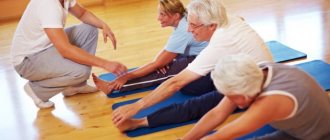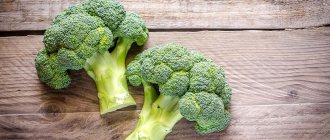Diseases of the digestive system have become more frequent. The condition is accompanied by discomfort, heaviness, bloating, the person simply cannot exist normally. Due to busyness, people do not have time to see a doctor. By self-medicating, the problem becomes more complicated, and the disease becomes chronic. A system of exercise therapy has been created for people to treat and prevent intestinal diseases. It activates the nervous, endocrine and digestive systems. For each disease there is a complex, so it is necessary to determine which system the exercises should be aimed at. The disease needs to be recognized.
Constipation is when a person cannot empty his intestines for two days or there is a feeling when it seems that he has not completely emptied. Proper functioning of the intestines accompanies the digestive process and improves well-being. Scientists have proven that exercise therapy helps cope with this disease.
Constipation is divided into types: spastic and atonic. Static type - spasm must be eliminated. Do gymnastics slowly, in a relaxed state. Atonic type - gymnastics is done at a fast pace. The cause of this type of disease is low physical activity. Strength exercises are necessary to promote the movement of feces. Jumping, running and deep squats are effective for this form of the disease.
Experts name a number of sources of constipation:
- all kinds of intestinal diseases: ulcers, dysbiosis, inflammation of the colon;
- anal disease (hemorrhoids, anal fissures) that interfere with the release of the intestines;
- disorder of the endocrine glands: diabetes mellitus, hypoglycemia, hyperthyroidism;
- depression;
- diet;
- fecal stones;
- diseases of the nervous system: neurasthenia, vegetative-vascular dystonia, stroke;
- taking medications;
- pregnancy.
Treatment of constipation with exercises
Bowel exercises for constipation involve performing certain movements that promote blood flow to the pelvic organs and help increase peristalsis. This approach to solving the problem is safe and helps both older and younger people.
Violation of the act of defecation is familiar to everyone. Almost every adult has experienced constipation at least once in their life. For intestinal problems, people usually turn to laxatives for help, not knowing how effective gymnastics and yoga can be for constipation to stimulate motility.
Exercises to normalize intestinal function are useful not only for the walls of the intestines and stomach, they have a beneficial effect on the entire body, preventing many diseases.
Gentle cleansing of the intestines during constipation in the elderly and young occurs due to stimulation of the organ by contracting the abdomen. Thanks to this, digested food calmly moves to the outlet, blood flow improves, the feeling of heaviness disappears, and the abs become stronger.
Rules
In order for exercises to improve intestinal motility to help, it is important to follow the rules of execution. Physical therapy and yoga poses have their contraindications, so it is recommended to discuss this issue with a specialist.
When performing bowel exercises for constipation, you should know:
- systematic intestinal gymnastics for constipation for the elderly and young is the basis for maintaining muscle tone, therefore, the key to good motor skills;
- exercise for the intestines will be effective if done regularly;
- It is better to exercise in the morning, devoting at least 15 minutes to it, in order to prepare the body for the upcoming activity;
- to normalize intestinal function, you will need to perform exercises 2-3 times a day, repeating each up to 10 times;
- before you start, you need to stretch your muscles, do a few stretching exercises to avoid accidental injury;
- with good physical fitness, it will be useful to take up the sport you like, which will allow you to constantly keep your pelvis and abs in good shape;
- for constipation in the elderly, exercise therapy should be less intense, but longer, it is best to do it in the fresh air.
Simple exercises for constipation
Exercises for constipation can be performed from 2 positions - sitting and lying down.
Exercises for constipation
The most effective ways to restore bowel function through physical activity are:
| In children | Children experience constipation from the first months after birth due to the immaturity of the gastrointestinal tract and its adaptation to functioning outside the womb. In the absence of health problems, as well as with the parents properly organizing the lifestyle of a growing person, the problem of stool retention disappears by 1.5-2 years. If difficulty in defecation persists for a long time, it is recommended to consult a pediatrician for an additional examination of the baby’s health. |
| During pregnancy | Carrying a child forces a woman’s body to work with redoubled force. One of the most common problems during this period is irregular bowel movements. This is due to a sharply increasing load on the female body and direct compression of the intestines by the uterus, which occurs in the last stages (after 30 weeks). |
| Exercise | Technique for its implementation |
| Leg rotations from a lying position |
|
| Reverse embryo |
|
Best exercises
Easy exercises for constipation at home:
- On the back. The legs are raised, the position is held for 5 seconds. Repeat 7 times.
- On the back. At the same time, the arms and legs are raised, the position is fixed for a few seconds. As you exhale, the limbs lower and the body relaxes. Repeat 5 times.
- On the stomach. The legs are raised for 10 seconds. Repeated 5-7 times.
- On the back. The “bicycle” exercise is performed for 1-2 minutes.
- Standing. As you inhale, the stomach protrudes, and as you exhale, it quickly retracts. Repeated 10 times.
- Standing. The body is tilted in different directions. Up to 10 times, 2-3 approaches.
- Sitting on a chair. Raise your knees towards your body. Repeat 10 times.
- On the back. The legs are raised one by one, bent at the knees. Up to 15 times.
- On the side. Straight legs rise one by one. Performed 15 times.
- Sitting. The tips of the fingers reach the feet. Repeated 10 times.
Yoga poses
There is a practice of colon cleansing Shankha Prakshalana. It requires special preparation and psychological attitude. It is better to practice with a knowledgeable person.
Massage for children
Massage can help relieve constipation in children better than exercise, provided that it is performed correctly by parents on a regular basis. Depending on the age of the child, adults need to choose the duration of the process of normalizing intestinal function (the younger the child, the less time it is recommended to influence his body from the outside).
If parents follow the main stages of the massage, the urge to have a bowel movement occurs in the child after 15-20 minutes. after the manipulations:
- Place the baby on his back.
- Place your right palm on your stomach and perform 7 circular stroking movements clockwise. The diameter of the massage circle must be increased gradually.
- Wrap your hands around the baby's body in the lumbar region so that 4 fingers of each hand are under the baby, and 1 on top.
- Gently move your fingers towards each other until they touch, avoiding excessive pressure on the abdomen.
- Place your right palm on the child’s stomach and perform up to 30 vertical strokes from the navel area towards the pubic bone.
It is recommended to repeat the above complex at least 5 times a day, while making sure that its implementation does not cause discomfort to the baby. If a child cries during a massage, and the effectiveness of the manipulations is reduced to zero, adults should show him to the pediatrician so that he can clearly explain to them the technique of eliminating constipation in the child.
Precautionary measures
Exercises for constipation for better bowel movements usually do not require much effort and are easy for young and old. However, certain groups of people should exercise caution. In case of serious illnesses, even simple exercises for constipation can be dangerous. This applies to chronic absence of bowel movements when medical help is needed.
Exercising for constipation can be dangerous in the following situations:
- high blood pressure;
- severe diseases of the cardiovascular system;
- recent injuries;
- general malaise;
- acute infectious processes in the body;
- suffered a heart attack and stroke.
Gymnastics for stimulating bowel function is very effective. Doctors recommend performing useful exercises daily, which will help maintain a healthy gastrointestinal tract.
Exercises for constipation during pregnancy
During pregnancy, any physical activity should be agreed upon with the gynecologist observing the woman.
In the absence of contraindications for health reasons, the expectant mother will be able to get rid of constipation by performing the most effective exercises:
| Exercise | Technique for its implementation |
| Alternate touching of knees |
|
| Ball |
|
| Raising bent limbs |
|
It is necessary to choose a treatment for constipation, taking into account the cause that disrupted the intestines, the person’s age, as well as the characteristics of his health.
The most effective means of maintaining the functioning of the gastrointestinal tract is considered to be the normalization of eating behavior, as well as the regular implementation of a set of massage procedures and physical exercises that prevent increased gas formation.
Self-massage
It is advisable to combine strength training and massage elements. It will help improve the functioning of the entire gastrointestinal tract. The movements are simple; no special skills are required to perform them. It is better to do self-massage in the morning. It consists of the following elements:
- stroke the stomach in a clockwise circular motion;
- stretch your feet. You can use a massager;
- massage your fingers;
- using a damp cloth, stroke the stomach from bottom to top.
Constipation and low physical activity
Reduced physical intensity is a common cause of intestinal problems. Today, in the age of technological development, physical inactivity is widespread, since most people spend their time watching TV shows and sitting at the computer during their days.
A sedentary lifestyle leads to the development of many problems:
- obesity;
- haemorrhoids;
- decreased muscle tone;
- slowing down metabolism;
- stagnation of blood in vessels and capillaries;
- relaxation of the intestines, etc.
All of the above processes are directly related to the appearance of atonic and spastic types of constipation. Such constipation is often chronic, and its treatment can last for months.
In order to improve bowel function and regulate daily bowel movements during physical inactivity, you need to start doing physical exercises against constipation .
Daily exercise improves metabolism and prevents the accumulation of feces. If we talk about constipation that has already occurred, then properly selected gymnastics breaks up hardened excrement and activates the motor function of intestinal smooth muscles and peristalsis.
Types of gymnastic exercises
There are several types of gymnastic exercises for constipation:
- Breathing exercises;
- Medical;
- Tibetan hormonal gymnastics;
Respiratory
Most often, constipation affects older people, women during late pregnancy, mothers who have recently given birth, and people who have undergone surgery. With such symptoms, it is forbidden to engage in physical exercise.
In such cases, breathing exercises help relieve constipation. This gymnastics works with proper inhalation and exhalation. The diaphragm begins to work, which starts intestinal motility.
There are several recommendations for using breathing exercises for constipation:
- Lying in a relaxed position will have a great effect.
- During inhalation, you are allowed to place your hand on your stomach to control the depth of inhalation.
- During exhalation, it is necessary to empty the lungs as much as possible from the air, the diaphragm should rise to the level of the chest, the stomach should be pulled towards the spine, and the arm should fall along with the stomach.
- In the next stage, you need to inhale not with your chest, but with your stomach and control yourself with your hand.
Such exercises for constipation are beneficial not only for constipation or hemorrhoids, but also for many other intestinal diseases . They can be performed at any convenient time and in any convenient position.
Video:
Medical
All physical exercises for constipation of varying strength have a beneficial effect on intestinal function. Therefore, you should not focus on one set of exercises. To get rid of constipation, you can do gymnastics both at home and in the gym.
Selection of exercises:
For normal functioning of the intestines and its balance, it is necessary to tilt the body in different directions, make rotational movements of the body and pelvis. If you have constipation, abdominal pumping, jumping rope, squats, marching in place and much more can have a good effect.
It is important to remember that if you regularly perform all the exercises, you can achieve a certain effect; a couple of workouts will not help the matter.
Tibetan hormonal gymnastics
10 basic exercises in Tibetan hormonal gymnastics . They are divided into categories for arms, legs, eyes, belly, ears, crown, neck and forehead. If you perform them regularly and in a certain sequence, you can achieve the desired result.
| Name | Execution technique |
| Warming your hands. | Take a lying position on your back, stretch your arms at chest level and begin to rub them. If during such an exercise the hands remain dry, then the person’s health is in order. If your hands warm up for a long time and remain wet, then you may have chronic diseases. |
| Pressure on the eyes. | It is necessary to apply well-warmed palms to your closed eyes. It is easy to press the eyeballs 30 times at an interval of 1 second. After this, you need to leave your palms on your eyes for 2 minutes, and then remove them without opening your eyes for a while. This exercise will help stimulate the work of the eyes, pineal gland and pituitary gland. |
| Pressure on the ears. | It is necessary to press the heated palms to the ears so that they are on the back of the head and apply pressure for 30 repetitions. Stimulating the ears improves skin color and the functioning of the vestibular system. |
| Face massage. | It is necessary to clench your hand into a fist, move your thumb to the side, perpendicular to your palm, and apply them to your earlobes. After this, with your fingers clenched into a fist, begin to gently massage your face. Start movements from the nose or lips to the ears. You can also do additional exercises. Their essence is to rub the nasal sinuses and the area between the eyebrows. This exercise helps reduce the number of wrinkles and swelling of the face, improves skin color and lymph flow. |
| Smoothing the forehead. | Using open, warm palms, massage in circular motions from the right to the left temple. This exercise can lead to a reduction in wrinkles, clearing of the sinuses, blood flow, and activation of the pituitary gland. |
| Contactless massage. | You need to place a pillow or cushion under your neck. At the first stage, you need to place your palms on top of each other, then begin massage movements from the crown to the forehead, at a distance of 5-8 centimeters from the head. Perform the movements at least 30 times, then take a short break and continue non-contact exposure with your palms from ear to ear. Such exercises warm up the shoulder girdle, tone the forearm muscles and normalize blood pressure. |
| Effect on the thyroid gland. | It is necessary to place your right hand on your neck, palm down, and with your left hand make movements from top to bottom without touching the skin. Number of repetitions 30 times. Such exercises help distribute energy and improve thyroid function. |
| Abdominal massage. | It has three stages. 1. Make circular movements with your palms clockwise and lightly press on your stomach. 2. Do the same movements at the level of the solar plexus in a clockwise direction. Lightly touching the stomach and liver area. 3. Place warm hands on your back in the kidney area and hold for about 30 seconds. |
| Warm up your arms and legs. | Take a lying position. Alternately raise your arms and legs up and place your feet and hands parallel to the floor. Start performing exercises with rotational movements of the hands and feet. To do this, connect the knee and elbow joints. Perform the exercise thirty times. It is recommended to complete such exercises for constipation with light vibrating movements of all limbs. Such exercises for constipation improve the functioning of capillaries, develop joints and restore them. |
| Massage of joints and feet. | Finish the exercises by rubbing. Take a comfortable sitting position and rub your feet or toes. If there is pain in some place, you need to pay more attention to that particular point. This exercise for constipation stimulates the functioning of the whole body. |
For normal intestines
If bad bowel movements are not associated with weakening of the intestinal muscles, then physical exercise should consist of measures to stimulate motor function and remove accumulated gases.
It is best to carry out therapeutic exercises in the morning before meals. Before starting, you should drink warm water (not hot); you can add honey if desired. This helps stimulate bowel function and soften accumulated stool.
It is important to remember that exercise for constipation does not require endurance, as does cardio training. Movements should be smooth, unhurried, with obligatory fixation of the position and a short rest.
We recommend that you read the article “How to soften stool during constipation.”
General information about the disease
According to statistics, constipation is diagnosed in 30-50% of adults (elderly people are more susceptible to it) and up to 20% of pediatric patients.
In some cases, patients alternate between delayed bowel movements and loose stools. To successfully treat a pathology, it is necessary to determine its cause.
Problems with bowel movements may be associated with the following conditions:
- genetic predisposition;
- organic and functional disorders in the gastrointestinal tract;
- the presence of neoplasms in the body;
- use of certain medications;
- frequent stressful situations;
- endocrine disorders;
- poor nutrition;
- inactive lifestyle.
Depending on the causes of development and the existing signs, according to one of the classifications, pathology is divided into 2 types, which are presented in the table.
| Type of pathology | Explanation |
| Spastic | Develops due to spasms of the intestinal muscles, which prevents the movement of feces through the intestines, observed against the background of endocrine, hormonal disorders, and mental disorders |
| Atonic | Caused by weakness of the intestinal muscles, which leads to slower movement of feces, discomfort during bowel movements, often observed in elderly patients, with insufficient physical activity, prolonged work at the computer and driving a car |
Drug therapy for delayed defecation may consist of the use of laxatives, antispasmodics, and drugs of other groups, depending on the identified cause. The selection of medications is carried out taking into account the cause of the development of the pathology, existing symptoms, contraindications and some other factors.
The treatment complex also includes other methods:
- diet therapy;
- physiotherapeutic methods of treatment;
- massage (including self-massage at home);
- breathing exercises.
Any therapeutic measures should be carried out only after consultation with your doctor.
Auxiliary methods for restoring bowel function
In addition to exercises for good bowel function, some of the recommendations below may help you:
- Water. Try to consume up to two liters of water per day. Part of the liquid we consume
per day, absorbed in the intestines. The more water is present in the body, the more there is in the intestines. The liquid softens the stool, and stool passes more easily. With increasing physical activity in the form of therapeutic exercises for the intestines, the volume of water consumed by the body will increase. - But this does not mean that from tomorrow you will drink two liters. You need to increase your drinking norm gradually. Every day, add a small amount of fluid to your norm, and then your body will easily get used to it and adapt to the changes.
- Eat small meals. What does it mean? What you need to eat little, but often. On average, the volume of food at a time should not exceed 250-300 grams. But you need to eat every 2.5-3 hours. Eat slowly, crushing food in your mouth. A break from eating can only be done to do intestinal exercises for constipation (video presented). Forget about snacking on fast food.
- Introduce 500 grams of fresh vegetables per day into your diet. Vegetables rich in dietary fiber help stimulate peristalsis.
- Try to give up white bread, canned food, and white flour products.
- Fruits are also a source of fiber, but not all are equally beneficial for the gut. Fruits with astringent taste are contraindicated for people with problems with bowel movements.
- A glass of kefir at night is something your gastrointestinal tract will thank you for.
Together with a drinking regime, fractional meals and exercises to improve bowel function during constipation, you can improve bowel function.










